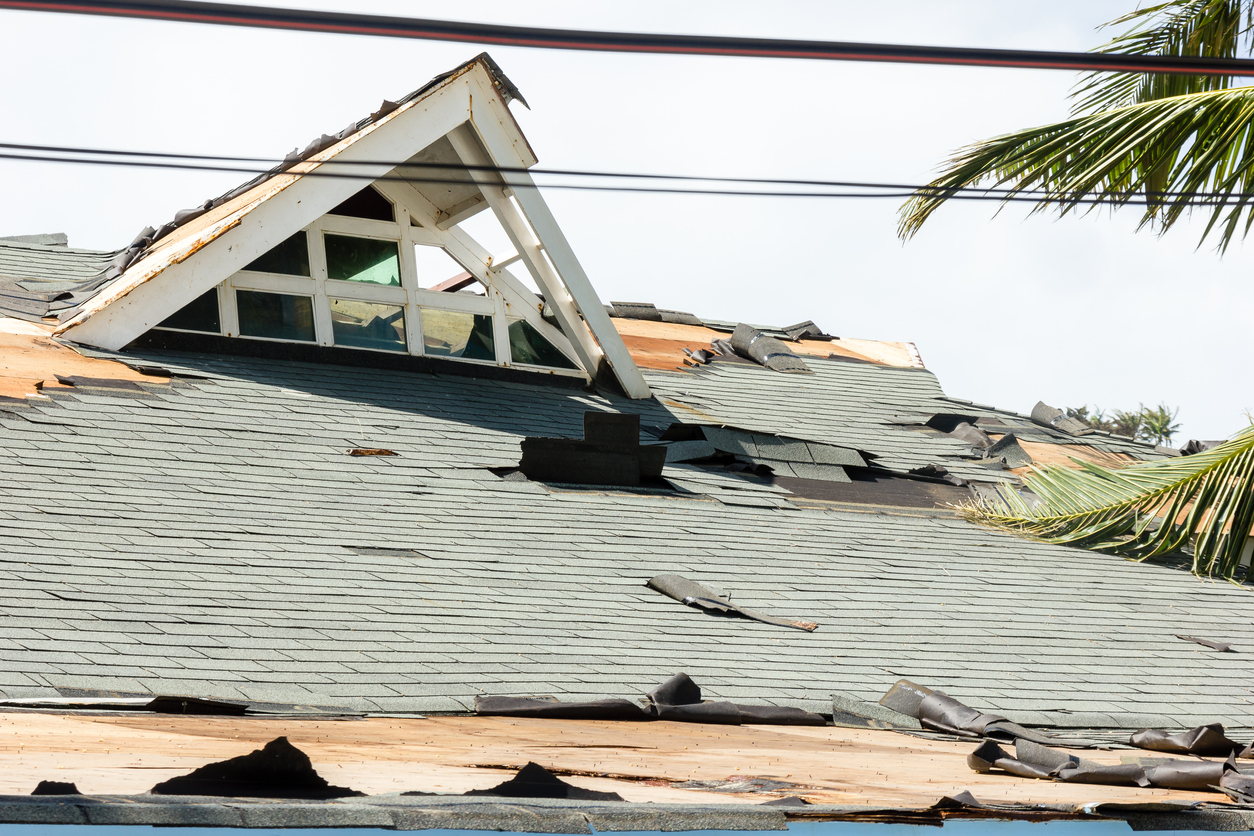After a big storm rolls through your area, you’ll just be happy to see the sun shining again. However, you need to be aware of the damage high winds in a storm can do to your home. Your roof, in particular, is at risk of wind damage.
Here’s what you need to know to keep wind damage to roof materials to a minimum during and after storms.
How Wind Can Damage Your Roof
When you think of wind damage, your roof probably won’t be the first thing you’ll think of. There’s a lot of visible damage that’s done by wind, such as downed power lines, uprooted trees, and more. However, the wind can really do a number on your roof if you aren’t careful.
The most typical roof damage you’ll get from high winds is that of shingles getting pulled loose or ripped free of the roof entirely. It’s very easy for high winds to get under the shingles and pull at them, even if they’re new shingles.
Roof damage can come as a consequence of other wind damage, too. For example, a branch that has been pulled free of a tree can land on your roof, damaging it. Debris also easily makes its way into the gutters, which can lead to blockages and ice dams if the weather is cold enough.
The Consequences Of Wind Damage
When your roof has suffered wind damage, the effects may not be immediately apparent. The problem is, issues will set in quickly if the damage is not addressed.
For example, if your shingles have been ripped off and weren’t replaced promptly, then that leaves your roof open to the elements. It’s very easy for water to make its way in and start causing problems. That includes the timbers starting to rot, or mold to set in.
If there’s debris in the gutters, that build-up of water will affect your roof too. As rainwater can’t make its way to the drains, it will overflow back onto the roof. Again, this will lead to leaks and all the problems they bring.
What To Do After High Winds
If you have high winds in your area, the most important thing you can do is act quickly. The quicker you take action, the less damage you’ll have to handle with your roof. Here’s what you should do after you have high winds.
Wait for the storm to pass: It’s vital that you don’t go outside and attempt to fix damage until the storm has passed. While you want to keep your home safe, your own personal safety should be paramount.
Inspect your roof: Once that storm has passed, you need to go outside and inspect the damage. You can do this safely by using a pair of binoculars to check the roof, from the ground.
Clean up debris: At this point, you’ll be ready to start cleaning up any debris from your yard or the roof itself. Remember, you still want to do this safely. Ensure there aren’t any downed power lines on the ground, and don’t get on the roof unless it is safe to do so.
Check inside your roof: You’ll also want to check inside your roof, as some damage will be more apparent here. Get up into your attic, and look for any daylight shining through. That will be a sign that shingles have been pulled away. You also want to look for leaks as well, so they can be handled quickly.
Call a roofer: If you have come across any roof damage, you’ll need to have it repaired as soon as possible. It’s always best to have a roofer handle the work or replacing shingles or repairing structural damage, as they are highly experienced. They will come and inspect your roof first, and then arrange for repairs as soon as they can.
Submit an insurance claim: Once you have the roofer organized, you’ll then be ready to submit a claim to your insurance company. In most cases, damage from high winds should be covered, but check your policy carefully.
How To Avoid High Wind Damage
While you can’t fully avoid damage to your roof, you can ensure that the damage is kept to a minimum. There are several ways you can do that, including the following:
Choose a top-rated roofer for your roof replacement: If you need to replace your roof, the workmanship involved will contribute a lot to its resistance against the wind. A well-made and installed roof should be sturdy, and stand up to most winds. Do your research when looking into a new roofer, so you can ensure that you’re getting the right people for the job.
Consider your roofing material: When you’re having your roof replaced, think carefully about the materials that you use. Asphalt shingles are a popular choice as they’re inexpensive, but you’ll see that they’re much more susceptible to the wind.
You can instead go for materials like metal roofing. Because they are installed in sheets and are securely fastened to the roof deck, they’re capable of resisting wind speeds of up to 140 mph in some cases. They are more expensive than other roofing types, but they last a long time so it’s something to consider.
Trim or remove trees: A lot of roofing damage during high winds comes from fallen branches or leaves that get swept into the gutters. If there are trees near your roof line, keep the branches trimmed so they aren’t overhanging it. If the tree is very close, you may want to consider having the tree removed entirely. This will avoid broken shingles and blocked gutters after storms.
It’s important to always check your roof as soon as possible after high winds. If the repairs needed are done quickly, it will avoid a lot of damage over time. Have a good roofer on speed dial, and call them as soon as you need them. It will save you a lot of money in the long run.

